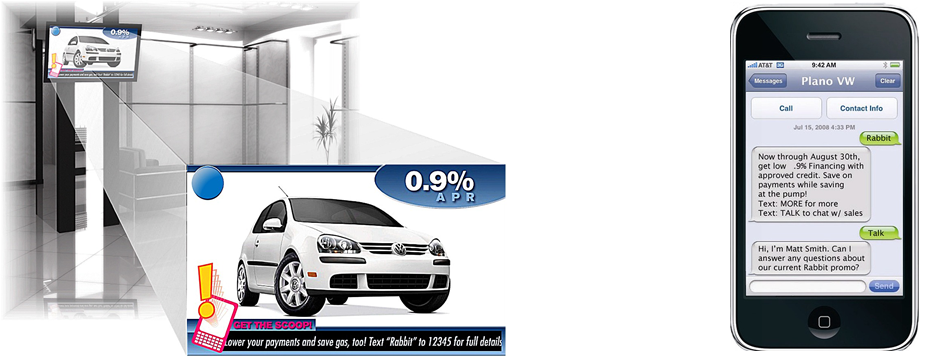As digital signage and mobile phones continue to advance in terms of their functionality, a recent webinar suggests, they can either work together or compete against each other for the public’s attention, depending on how they are integrated.
An online ‘town hall meeting’ took place on December 13, 2012, featuring a panel discussion between four members of the Digital Signage Expo’s (DSE’s) advisory board:
- Matthew Brown, digital experience manager for Servus Credit Union, an Edmonton-based financial institution.
- Stacy Milligan, manager of digital in-store media for MetroPCS Communications, a mobile phone service provider with a chain of retail stores.
- David Saleme, concessions manager for the Columbus Regional Airport Authority, which oversees the operations of three airports.
- James Velco, chief technology officer (CTO) for the John Marshall Law School.
As all of the speakers are involved with their organizations’ digital signage networks, they discussed how to delineate the role mobile communications can play in reaching their customers. With smart-phone adoption rates doubling year-over-year, many marketers and digital signage network operators have sensed an opportunity to take advantage of the increasingly ubiquitous technology, particularly in measuring viewer engagement. At the same time, however, smart phones have posed as competition for digital signage in terms of attracting and holding their users’ attention.
“Today’s mobile user ‘cocoons’ by looking at the phone,” said Saleme. “This is a relatively recent phenomenon that wasn’t contemplated in the scope of most digital signage projects. The challenge is to break through that cocoon, even if only for a moment, by offering interactivity. Then you can become part of the cocoon, sending information directly to the phone.”
The speakers discussed a variety of interactive options, the success of which they agreed would depend not only on ubiquity, but also on ease of use.
“Our in-store customers let us into their cocoon,” Milligan said. “We use short codes, whereby they can text us to get something. There’s a future for near field communication (NFC), but there are not many phones out there with it now. And a lot of people who own smart phones don’t use apps beyond Facebook and Twitter.”
“We’re trying to extend our digital signage messaging into mobile devices via Bluetooth and antennas,” said Brown.
“We use Quick Response (QR) codes on signs—both printed and digital—and text messaging,” said Saleme. “Most of our passengers have smart phones, so we’ve had a little more success, but we also have wayfinding kiosks where you can print out directions. The experience has to be faster and better or the smart phone user will look at your screen and say, ‘I don’t need that.’”
“I don’t know if NFC or QR codes will ever take off until you take out the legwork for the user,” Velco argued. “Interactive screens need to be simplified. If they’re too complex, they turn off the viewer. We use proximity card readers next to our digital signage, which people already understand. If they want information, they just have to swipe their security card and we can send it to them as an e-mail or text.”






